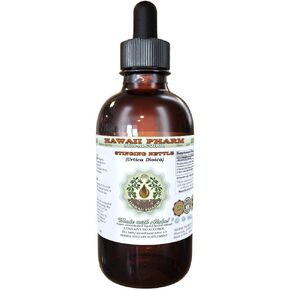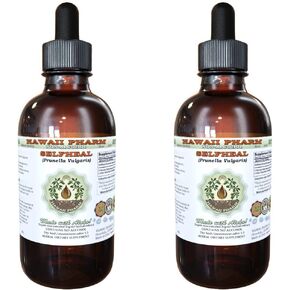- Shopping, made easy.
- /
- Get the app!
Liquorice (Glycyrrhiza Glabra) is a perennial plant with up straight, low-branched stems, 50-100 (sometimes up to 200 cm) tall. The underground organs of Liquorice consist of a rod root that penetrates the soil to a depth of 6-8 meters and a short thick many-headed rhizome, from which underground shoots depart. The leaves of the plant are regular, complex, elliptical or ovoid, shiny, slightly sticky, with a large number of glands, especially on the underside. The edge of the leaves is slightly bent down. Flowers are collected in loose racemose inflorescences. Inflorescences are located in the axils of the upper leaves. The flowers are pink-violet or whitish-violet, irregular. The fruit is an elongated bean, slightly curved, brown, and leathery. Glycyrrhiza Glabra blooms in June and July. Fruits are formed in August-September.
 -6%
Stinging Nettle Alcohol-Free Liquid Extract, Organic Stinging Nettle (Urtica Dioica) Dried Leaf Glycerite 2 oz
KWD 8.500
-6%
Stinging Nettle Alcohol-Free Liquid Extract, Organic Stinging Nettle (Urtica Dioica) Dried Leaf Glycerite 2 oz
KWD 8.500
 Marshmallow Liquid Extract, Organic Marshmallow (Althaea officinalis) Tincture Supplement 2 oz
KWD 6.500
Marshmallow Liquid Extract, Organic Marshmallow (Althaea officinalis) Tincture Supplement 2 oz
KWD 6.500
 HawaiiPharm Bromelain Alcohol-Free Liquid Extract, Bromelain (Ananas Comosus) Dried Powder Glycerite Natural Herbal Supplement 2 oz
KWD 8.500
HawaiiPharm Bromelain Alcohol-Free Liquid Extract, Bromelain (Ananas Comosus) Dried Powder Glycerite Natural Herbal Supplement 2 oz
KWD 8.500
 Selfheal Alcohol-Free Liquid Extract, Organic Selfheal (Prunella Vulgaris) Dried Herb Glycerite Natural Herbal Supplement, Hawaii Pharm, USA 2 fl.oz
KWD 8
Selfheal Alcohol-Free Liquid Extract, Organic Selfheal (Prunella Vulgaris) Dried Herb Glycerite Natural Herbal Supplement, Hawaii Pharm, USA 2 fl.oz
KWD 8